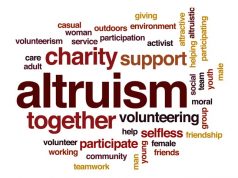Kathmandu, April 22, 2016
We have just stepped into the New Year and it has now been a full year since the devastating earthquake knocked us all out of our complacency and general tendency to take things for granted. Â The quake left almost nine thousand people dead, thousands more injured, and countless others homeless, as their houses were destroyed and many villages were reduced to rubble. It also ruined many priceless heritage sites, specially in the Kathmandu Valley. As if the colossal loss of human lives, indescribable suffering of the people and extensive destruction of property were not enough, there was the blockade that amplified the misery. The quake struck when the government led by the Nepali Congress was in power. In retrospect, the largest as well as other political parties seemed to be more concerned about a new constitution than about healing the physical and emotional wounds inflicted by the earthquake. Even today, a year after the calamity, the affected people are still crying hoarse for proper help, resettlement and rehabilitation.
Power-hungry entities
The governments led by Koirala and Oli as well as the politial parties in general clearly had lopsided priorities. All of them seemed to have been focused more on a new constitution than on the needs of the quake survivors. The constitution was promulgated five months after the tragic calamity. The constitution that had waited for almost seven years since the first constituent assembly elections could have waited for one or two more years in order to pay full attention to the needs of the millions of people. Instead of squabbling, it would have been a great relief to the people if the Koirala- and Oli-led governments and the political parties had worked in unison to mitigate the sufferings from the disaster. No wonder that most people think of political parties—rightly or wrongly—as power-hungry entities with little care for the public interest.
Immediately after the earthquake, the authorities and political parties had the opportunity to right the things that had gone wrong in the past. This includes the dismantling of illegal buildings, beginning with those built by the government and its agencies and state-owned companies and corporations. And then there was the need to draw up a generally agreed upon policy to ensure that the public do not have to face unnecessary problems like noise and air pollution due to the lack of coordination and enforcement of public policies. The Capital, with a very limited area situated in a valley that has three cities, is already overpopulated. Kathmandu is not merely the country’s political capital but also the busiest commercial, industrial and tourist hub of the nation. According to the 2011 census, the city has a population of over one million. If so, the number of its residents at a given time will likely exceed three million because of the perpetual in-migration of people from other parts of the country and the continual presence of foreign visitors who come to see the ancient city, which someone once described as a place with more temples than houses. This means Kathmandu as well as the other two cities of Patan and Bhadgaon had a treasure trove of heritage sites which need to be preserved at all costs.
A misplaced mentality  Â
Yet what have the present or past governments done to save our heritage? By allowing the building of malls in what was once public property—such as the Provident Fund’s Kathmandu Mall—the government and the Kathmandu Municipality are responsible for obliterating national heritage. Sundhara is now dry thanks to Kathmandu Mall. There is clearly a money-minded mentality when it comes to preserving national and world heritage sites. The environment in the periphery of heritage sites needs to be in keeping with the original concepts and surroundings as far as possible. Ther government and other concerned authorities need to ensure that such an environment is maintained even when they have to pay those whose buildings need to be kept intact in order to preserve the aesthetic atmosphere that tall structures take away.
Also difficult to understand is why foreign tourists are charged a fee to enter the Hanuman Dhoka-Basantapur area that houses world heritage temples and other structures. It is understandable that they should be charged a fee if they want to enter the buildings but to charge them to even visit the area is beyond comprehension. Surely every person in this world has as much right as a Nepali to enter an area that houses world heritage sites. Both the Unesco and the government need to rethink some basic rules for making world heritage sites accessible to the people from everywhere.
Heritage sites apart, the government immediately after the quake should have thought about the need for free public toilets in urban areas and drawn up basic guidelines for local authorities and concerned departments to ensure that night clubs, bars and party places are located in areas that do not disturb the general public. Party venues, for instance, are doing yeoman’s service by providing people with space to solemnise auspicious ceremonies such as marriage, but more often than not they tend to disturb the neighbourhoods where they are located. The night clubs and bars are worse as they constantly play loud music that makes the life in the locality miserable.
These are just some of the things the government could have done—apart from the urgent and unavoidable tasks of relief, rehabilitation and resettlement of those affected by the quake—but did not do. The year thus was unforgettable not only for the pain and suffering caused by the earthquake and the unnecessary and uncalled for blockade but also for what the government could have done but did not do.







